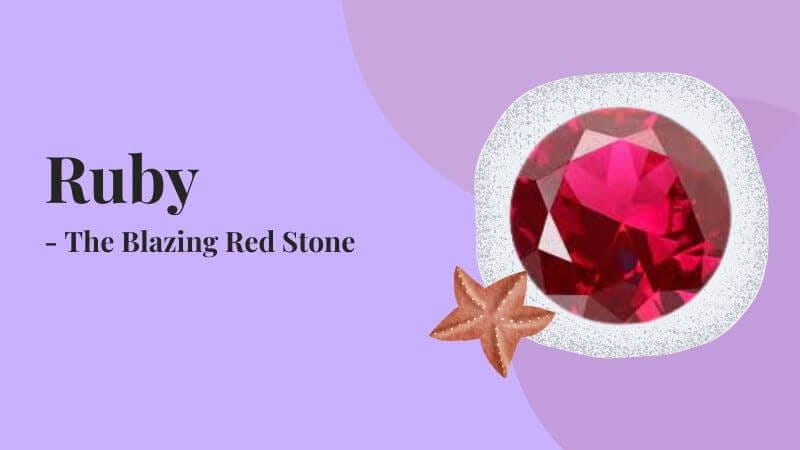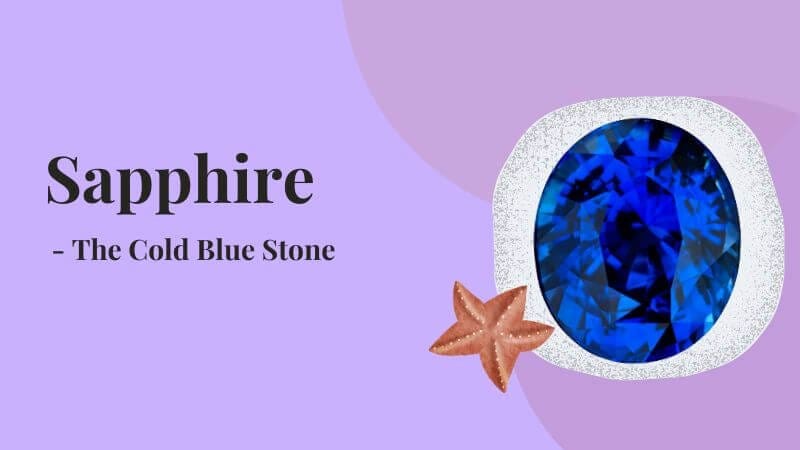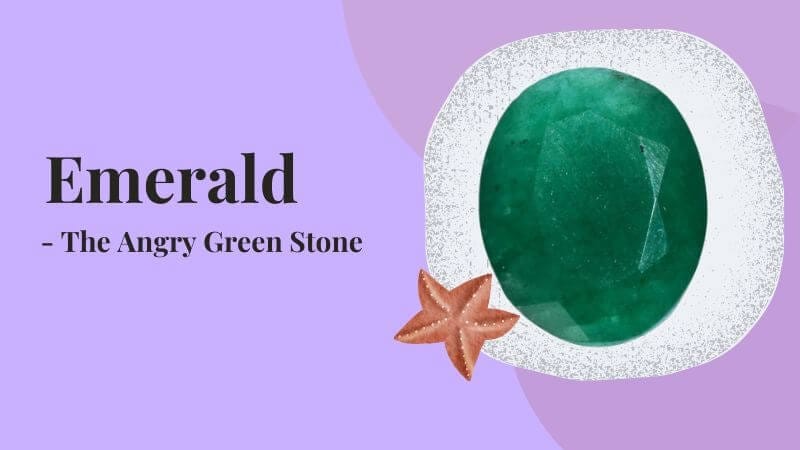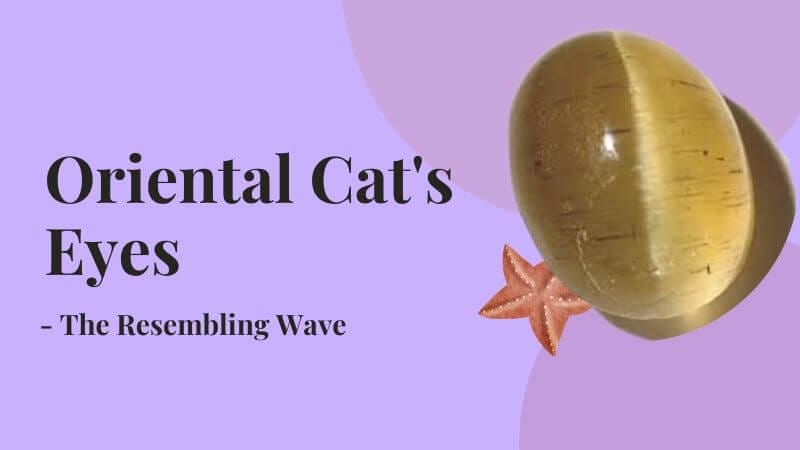You might be familiar with the legendary seven wonders of the world, the names of the seven vast oceans, seven continents, the seven vibrant colors that together form dazzling white light, and of course, the seven days of the week.
But did you know what are the 7 precious stones that fascinate people worldwide?
The term ‘precious stones’ refer to a group of gemstones highly valued for their rarity, rich colors, and durability. Most of them are made from these rare and top-quality minerals, but some organic ones are also in the mix!
The mesmerizing beauty of these stones is evident in the intricate designs and vivid colors of jewelry, artifacts, and architecture from various civilizations throughout history. And today, they are the most popular items in a jewelry store.
So, what are these seven gemstones exactly? Curious to know their names? Let’s find out what they are, what makes them unique, and why they are valued highly.
Table of Contents
Precious Stones vs. Semi-precious Stones – The Difference
Before we reveal the precious stones’ names, let’s get a clear idea of what sets precious stones apart from semi-precious ones.
So, gemstones are divided into two categories: precious and semi-precious stones. The precious stones are distinguished by their superior quality, exceptional rarity, hardness, and the stunning array of colors they exhibit.
Back in the day, this classification was based on the presumed value of the stones. But nowadays, things have changed, and these terms have blended. Many semi-precious gemstones are just as valuable as precious ones and rare. So, the lines between them have blurred over time.
For example, despite being semi-precious, garnet gems can fetch thousands of dollars higher than diamonds, traditionally considered precious.
However, strictly speaking, there are only seven precious stones.
The 7 Precious Stones’ List: Rare, Colorful, and Durable
1. Diamond – The Hardest Stone

Diamonds have been around for ages, almost as old as our dear planet. They take billions of years to form deep in the Earth’s belly. But only a handful make it from the Earth’s depths to the surface for mining.
Each diamond is unique, with its special features like inclusions and colors. It is the hardest material on Earth, ranking ten on the Mohs hardness scale.
The only other mineral that can scratch a diamond is the diamond itself. This explains why the Greek term ‘Adamas’ for diamond means ‘indestructible.’
Most mined diamonds fall in the normal color range, from white to pale yellow or brown. Those with more intense colors like yellow, red, green, or blue are called fancy color diamonds, including black diamonds.
Among these naturally colored diamonds, brown and yellow are common, while pink, blue, orange, green, red, and violet diamonds are exceptionally rare. The value of a diamond is usually determined by considering the 4 C’s: Color, Clarity, Cut, and Carat.
Once considered tears of the gods by ancient Romans, diamonds now hold a cherished role in wedding rings and jewelry — a symbol of love, beauty, and purity, bestowing a touch of magic upon each piece.
2. Ruby – The Blazing Red Stone

In June 2023, a huge 55.22-Carat ruby called Estrela de Fura was sold for a whopping $34.8 million in New York, discovered less than a year ago in Mozambique at Fura Gems’ mine, which originally weighed 101 carats when it was found. Its name means “Star of Fura” in Portuguese, Mozambique’s official language.
No wonder rubies are also considered among the world’s rarest and most valuable precious stones. In fact, natural rubies are rarer than diamonds. And with a nine on the Mohs scale, they are only second to diamonds in their hardness.
Rubies are a type of corundum, which is a crystal made of aluminum oxide. And their striking red color is because of chromium, which replaces some aluminum atoms in the crystal.
They can range from red-purple to red-orange, and the super rare and valuable one is called “Pigeon Blood” red. And get this – some of these gems are even fluorescent! So, they shine even more brilliantly when they’re out in the sunlight.
Rubies are often connected to meanings like charity, dignity, and divine power, making them a popular alternative precious stone for diamond rings or other settings calling for more colorful jewels.
3. Sapphire – The Cold Blue Stone

Originating from the corundum mineral, both sapphire and rubies are almost the same, with only a difference of trace elements, giving it a blue color instead of red. Titanium iron, and magnesium are responsible for its trademark blue hue.
The name comes from the Latin word “sapphires”, meaning blue. And symbolically, sapphires are linked with truth, virtue, and constancy, which makes them even more special!
Sapphires come in a whole bunch of different colors! They’re called fancy sapphires; you can find them in green, purple, pink, reddish-orange, and yellow shades.
But here’s the cool part: some sapphires can even change color! They have this nifty trick where they shift from blue to purple depending on the lighting.
Sapphires are also among the durable precious stones with a nine on the Mohs scale, making them perfect for earrings, bracelets, and necklaces.
4. Emerald – The Angry Green Stone

With its unmatched green hue, emerald is one of the most sought-after gemstones globally. It belongs to the beryl mineral family, and its green color is attributed to trace amounts of chromium or vanadium.
The name emerald comes from the Greek “smaragdus” (green), symbolizing immortality, incorruptibility, and triumph over sin and trials.
Unlike other precious stones, emeralds are only green, with hues ranging from yellow-green to deep jade. The most desirable emerald colors are bluish-green to green, boasting vivid saturation and medium-dark tone.
Emeralds are even rarer and more expensive than diamonds! So, if you want a bigger-looking gem without breaking the bank, emeralds are a fantastic choice. And they look larger than diamonds of the same carat weight because they’re less dense.
Most emeralds have some inclusion or imperfection, which can create attractive patterns, making no two stones the same, increasing the gem’s value.
Despite measuring 7.5 to 8 on the Mohs Scale of Hardness and being one of the most durable stones, emeralds are susceptible to chipping and cracking due to inclusions. So, they shall be handled more carefully while wearing or cleaning them.
Whether on a ring, earrings, or necklace, emerald precious stones are highly cherished. They are May’s birthstones and symbolize the 25th and 35th wedding anniversaries.
5. Pearl – The Organic Stone

Pearls have a fascinating story! They’re formed by living creatures in the sea, unlike other precious stones, which usually come from deep inside the Earth.
Imagine a mollusk, like an oyster, chilling in the ocean. Sometimes, tiny things like a pesky grain of sand find their way inside the mollusk’s shell and bug it.
But, instead of complaining, the clever mollusk takes action. It starts covering the irritating intruder with layers and fluid secretion, like making a cozy little shelter to protect itself. Over time, those layers pile up and harden, and voila! You’ve got yourself a pearl!
These natural pearls are rare and made all by themselves without human intervention. They come in different shapes, but the perfectly round ones are like unicorns – extremely hard to find!
On the other hand, we have cultured pearls, which are more common and are made on special farms in either freshwater or saltwater. These pearls can be dyed, and there are four main types: Akoya (saltwater), freshwater, South Sea, and Tahitian.
Akoya pearls, prized for their roundness and luster, come from Japanese farms. South Sea pearls, on the other hand, are large and luxurious, found in places like Australia, the Philippines, and Indonesia.
Tahitian pearls are renowned for their exotic black color but come in various shades, making them even more fascinating.
And last but not least, Freshwater pearls grow in mussels and have diverse shapes and colors, commonly used for affordable multi-strand necklaces and bracelets.
Once limited to necklaces, pearls now have versatile uses in fashion and decor. These precious stones are worn with various outfits and incorporated into weddings, homes, and parties.
6. Alexandrite – The Chameleon Stone

The alexandrite is called “nature’s magic trick” because it can change colors like a chameleon! Depending on the light, it goes from looking like a ruby to an emerald.
You’ll see purplish-red shades in regular lightbulb glow, but it turns green under the sun or fluorescent lights.
The cool thing is that not all alexandrite stones change colors similarly. Some do a complete color switch, which is super rare and expensive. Others shift along the color spectrum and are more affordable.
Because alexandrite is hard to find, it’s one of the pricier precious stones. The cost depends on size and quality, but the real deal-breaker is how much it changes color. The more drastic the shift, the higher the price!
7. Oriental Cat’s Eyes – The Resembling Wave

People might call it Oriental cat’s eye, cymophane, or Cat’s Eye chrysoberyl. The term cymophane originates from a Greek word signifying “resembling a wave.” These gemstones display a mesmerizing play of hazy, opalescent waves.
Unlike other cat’s eye gemstones, it has those fine silk inclusions that make it stand out. It comes in various colors, like honey brown, yellow-brown, and green.
Light hitting this precious stone the right way creates a fantastic shadow effect, revealing rich browns on one side and a lovely yellowish-white on the other.
The Bottom Line
There are only seven precious stones in the world: diamond, ruby, sapphire, emerald, pearl, alexandrite, and oriental cat’s eyes. And people are obsessed with them because they tick all the right boxes.
These precious stones are super rare; they have amazing vibrant colors, are incredibly durable, and, let’s not forget, they are stunningly beautiful. It’s no wonder everyone’s head over heels for these gems!
Owning one of these dazzling gems is like having a piece of magic in your hands.
People Also Ask
- How to identify precious stones?
If you know the main things to look for, it’s easy to identify different gem varieties. These important features include their color, how they shine, how transparent they are, any special effects they may have when light passes through, and any distinctive structures or inclusions.
- What is the semi-precious stones list?
The semi-precious stones list includes Amethyst, Rose quartz, Agate, Amber, Tourmaline, Jade, Red beryl, Aquamarine, Lapis Lazuli, Onyx, Black opal, Zircon, and Opal.
- Can all precious stones be created in a lab?
While many precious stones can be created in a lab, it’s essential to note that the market values natural gemstones more than their synthetic counterparts. Natural gems are typically rarer and hold sentimental value, increasing prices.

